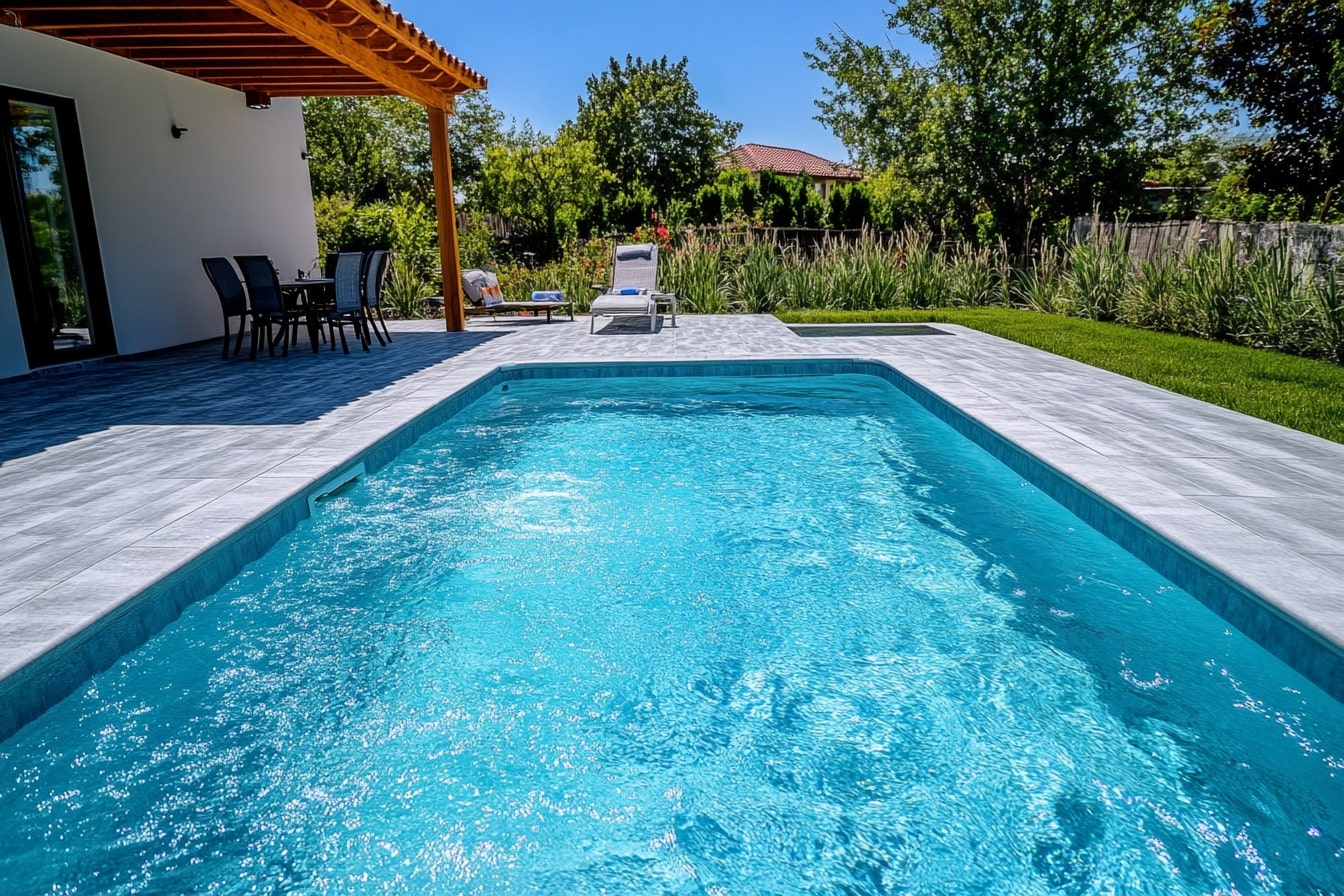2025 Backyard Pool Trends in the U.S.: Sustainable Innovations, Smart Tech, and Outdoor Living Integration
By 2025, U.S. backyard pools are evolving into eco-conscious, smart-enabled centers of wellness and entertainment. This article reviews sustainable technologies, intelligent controls, and design strategies for integrating pools with outdoor living to create energy-efficient, modern backyard retreats.

Sustainable and Energy-Efficient Pool Systems: The Cornerstone of Contemporary Pools
As environmental awareness continues to grow, sustainable pool systems are moving from niche to mainstream in the American market. Variable-speed pumps, once considered a premium option, are becoming standard equipment in 2025 pool designs, reducing energy consumption by up to 90% compared to single-speed alternatives. Solar-powered heating systems are seeing particularly strong adoption in sunbelt states, where they can extend swimming seasons by several months while minimizing utility costs.
Advanced filtration technologies are also gaining prominence, with mineral-based and saltwater systems reducing chemical usage and maintenance requirements. Manufacturers are responding to consumer demand with integrated systems that combine multiple sustainability features, such as pools that use harvested rainwater and incorporate natural filtration through carefully designed aquatic plantings. These “living pools” or bio-pools offer chemical-free swimming experiences while creating microhabitats that support local biodiversity.
Pool covers have evolved substantially, with automated, insulated covers becoming increasingly sophisticated in their ability to retain heat and reduce water evaporation—a critical feature in drought-prone regions where water conservation is paramount.
Smart Pool Technology: Combining Convenience with Efficiency
The integration of smart technology into pool systems represents one of the most transformative trends heading into 2025. Voice-activated controls compatible with home automation platforms like Google Home, Amazon Alexa, and Apple HomeKit allow homeowners to adjust temperature, lighting, and water features without lifting a finger. Mobile applications provide remote monitoring and control capabilities, enabling users to prepare their pool for use while still at work or traveling.
Water quality sensors continuously monitor chemical levels, automatically adjusting treatment systems to maintain optimal balance. This not only improves safety but also optimizes chemical usage, reducing both environmental impact and maintenance costs. Advanced leak detection systems alert owners to potential problems before they become major issues, preventing water waste and property damage.
Smart lighting systems with programmable LED fixtures allow for customizable ambiance while using a fraction of the energy required by traditional pool lighting. These systems often include scheduling features that coordinate with home automation routines, creating seamless transitions between daytime and evening outdoor environments.
Integrating Pools with Outdoor Living Spaces: Enhancing Usability and Appeal
The concept of the pool as a standalone feature is becoming obsolete as 2025 approaches. Modern designs increasingly integrate water features with comprehensive outdoor living spaces, creating multi-functional environments that serve as extensions of the home. Vanishing edges, beach entries, and sunken seating areas blur the boundaries between pool and patio, while transparent acrylic walls occasionally allow pools to serve as dramatic visual elements within architectural designs.
Outdoor kitchens, fire features, and weatherproof entertainment systems positioned adjacent to pool areas create cohesive spaces for entertaining. Retractable pool enclosures and climate control technologies extend usability throughout the year in regions with seasonal weather challenges, maximizing return on investment for homeowners.
Landscaping plays an increasingly important role in these integrated designs, with drought-resistant native plantings creating privacy screens and visual interest while supporting local ecosystems. Strategic placement of trees and structures provides natural shading that reduces water evaporation and creates comfortable microclimates around pool areas.
Wellness-Focused Pool Features: Creating Backyard Retreats for Health
The growing wellness movement has significantly influenced pool design, with homeowners increasingly viewing their aquatic spaces as tools for health maintenance rather than purely recreational assets. Swim-current systems that allow for stationary exercise swimming are becoming standard features in smaller pools, while dedicated lap lanes appear even in family-oriented designs.
Hydrotherapy features once found only in commercial spas are increasingly common in residential installations, with targeted jets addressing specific muscle groups and promoting recovery from exercise or injury. Temperature-controlled zones allow for contrast therapy—alternating between hot and cold immersion to reduce inflammation and improve circulation.
Salt systems, UV sanitization, and ozone treatments are gaining popularity as health-conscious homeowners seek alternatives to traditional chlorine. These approaches not only reduce eye and skin irritation but also eliminate the chemical odor often associated with indoor and enclosed pool environments.
Innovative Pool Designs Tailored for Small and Urban Lots
As housing density increases in many urban and suburban areas, pool designers are responding with space-efficient solutions that maximize functionality in limited footprints. Plunge pools, measuring just 10 to 15 feet in length, provide cooling and relaxation benefits without requiring extensive yard space. These compact designs often incorporate powerful jets for resistance swimming and hydrotherapy.
Modular and prefabricated pool systems are making installation possible in previously challenging locations, including rooftops and interior courtyards. These systems offer shorter construction timelines and reduced site disruption compared to traditional concrete pools, making them ideal for urban retrofits and renovation projects.
Convertible pool systems represent perhaps the most innovative response to space limitations. These designs feature movable floors that can transform swimming areas into solid surfaces for other activities when not in use. While initially expensive, these systems effectively double the usable space in compact yards, making them increasingly attractive in high-density neighborhoods.
Pool Installation and Maintenance Cost Considerations
As pool technology advances, understanding the financial implications becomes increasingly important for homeowners. Installation costs vary significantly based on design complexity, materials, and regional factors.
| Pool Type | Average Installation Cost (2025 Projection) | Typical Annual Maintenance Cost |
|---|---|---|
| Traditional Concrete/Gunite | $65,000-$100,000 | $3,000-$5,000 |
| Fiberglass Shell | $45,000-$85,000 | $2,000-$3,500 |
| Vinyl Liner | $35,000-$65,000 | $1,500-$3,000 |
| Natural/Bio Pool | $70,000-$120,000 | $2,000-$3,000 |
| Smart Pool (Additional Technology) | $5,000-$25,000 premium | $500-$1,000 premium |
Prices, rates, or cost estimates mentioned in this article are based on the latest available information but may change over time. Independent research is advised before making financial decisions.
The initial investment in sustainable and smart technology often yields significant long-term savings. For example, variable-speed pumps typically pay for themselves within two to three years through reduced energy costs, while proper automation can optimize chemical usage and reduce water consumption by up to 30%.
As we move toward 2025, the American backyard pool continues its evolution from simple swimming hole to sophisticated outdoor living environment. With innovations focused on sustainability, technology integration, wellness, and space efficiency, tomorrow’s pools will offer enhanced experiences while minimizing environmental impact and maximizing property value. Homeowners considering pool installation or renovation would be wise to consider these emerging trends when planning their projects.




